Risk, the most valuable currency between startups and the industry

Tomorrow, I’ll present a keynote titled “Trading Risk, the Most Valuable Currency Between Startups and the Industry” for the CEA at the LETI Days event. The main points of this discussion will be the positive nature of risk for businesses, the cultural gap that the French (and Europeans) have regarding dealing with risks, and how to game the innovation rules strategically.
Innovation pipelines are broken
One of the key tools that I’ll try to describe is how to use what I call Reverse Pipeline logic.
The way you’ve been trained in any business context is to manage innovation with a typical Go / No Go Pipeline logic. In a nutshell, you start with as many ideas as possible to develop a new solution for your market. You select the best ones, reinforce them further, and select the best ones again… Until you only have three prototypes to present to your board, which will select one or another depending on the feng shui of the meeting room, green-light it to the market.
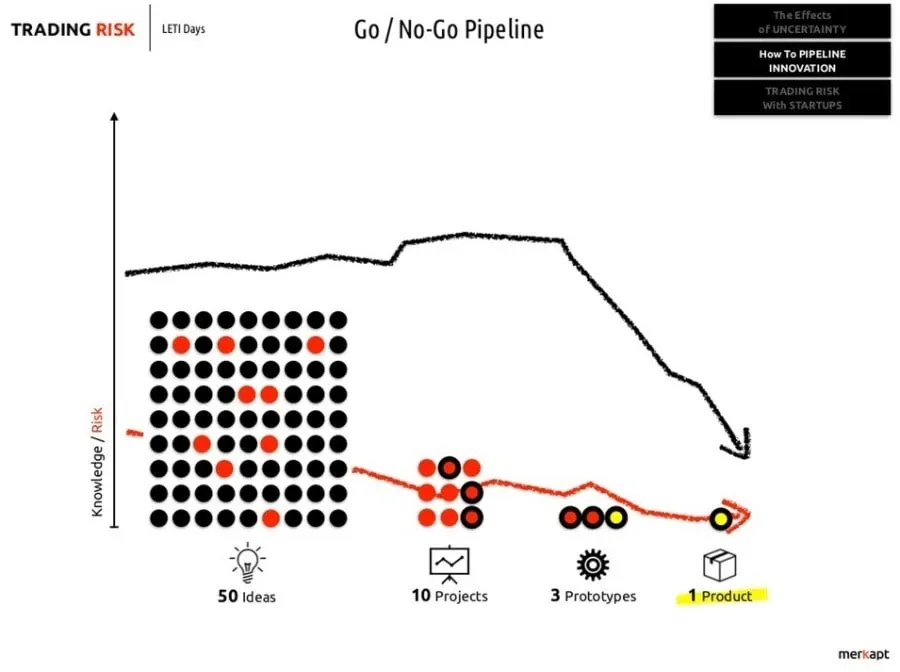
This is the worst possible way to innovate.
I mean, if you want to push incremental innovation to the market, of course, it will do the job. More or less. But eventually, you are just inbreeding your own stale ideas over and over again. This seems safe, but this is just lazy.
The problem with the go / no-go pipeline is evident: because it’s designed to minimize risk-taking, it doesn’t push you out of your comfort zone. If you stay in your comfort zone, you won’t uncover anything new about your market (or any other market, for that matter).
Reversing the pipe
Now, granted that there’s no magic methodology, different heuristics exist. One of them that served me well for many years, with numerous customers in various industries, was building Reverse Pipelines:
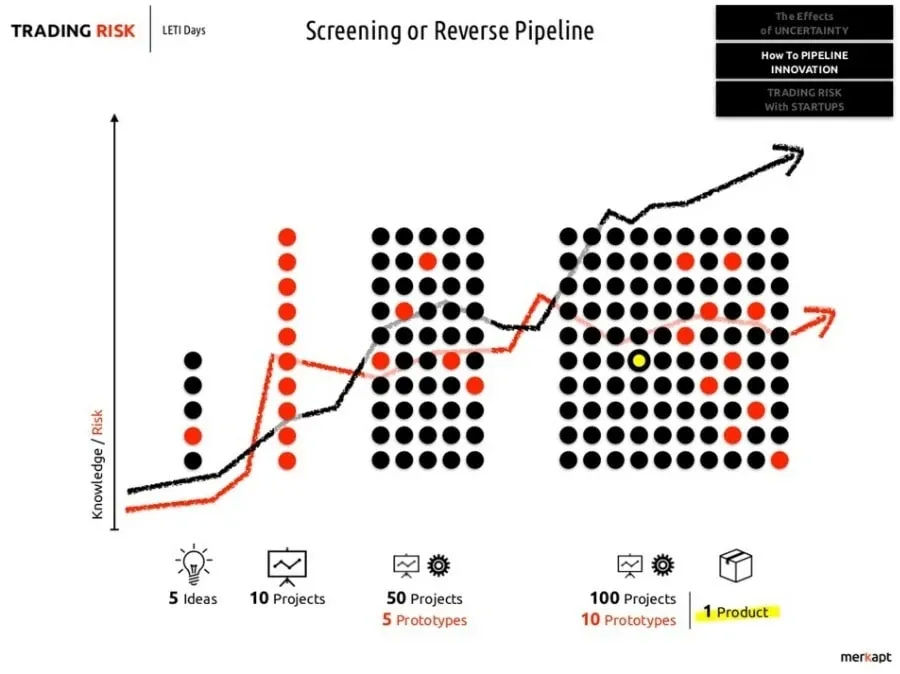
The overall process is as follows:
- Pick a few core ideas. Five is plenty enough. Ideally, they translate your strategic drivers, best practices from a subsidiary nimbler than you, or even advanced projects from key competitors.
- Build two projects for each idea (a low-cost and a premium version; a domestic project, an overseas one, etc.).
- Immediately prototype one out of two projects. While you build them, refine the other scenarios and add more versions (from a low-cost model to freemium, sponsorship, micro-revenues, product as a service, etc.).
- Push on and expand your portfolio of projects with each prototype iteration, the soft cap being around 100 project scenarios, ten functional prototypes, and eventually a first product.
This pipelining method may seem daunting, but it’s rather quite simple to reach. It obviously needs some commitment and resources over 2-3 years. And as we’ll see further, startups can help you fuel that.
The core virtue of this reverse pipeline is that it forces you from the get-go to take risks (immediately prototyping), learn from them, take more risks in a more educated way, recycle, expand and improve. Your team will quickly learn to push their comfort level to a new « acceptable level of risk » and build a critical mass of opportunities:
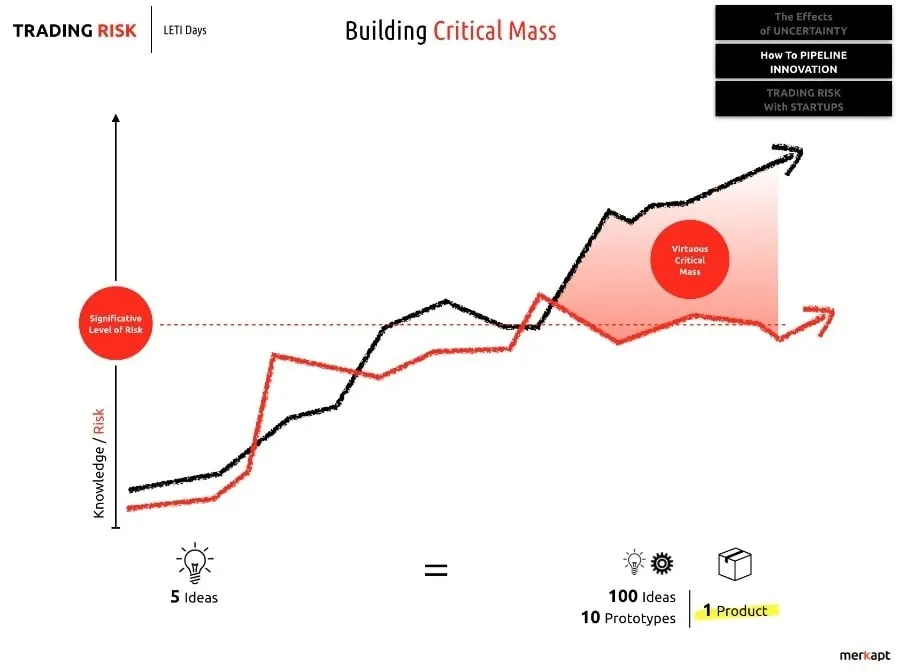
With enough risk, options appear
That will serve you well because innovation has an important level of randomness (you can call it serendipity if you feel more reassured by that). People who try to win every time don’t make money. The trick is to bet as low as possible, as many times as possible, to maximize the payoff opportunities.
In investment terms, it’s called « Optionality.»
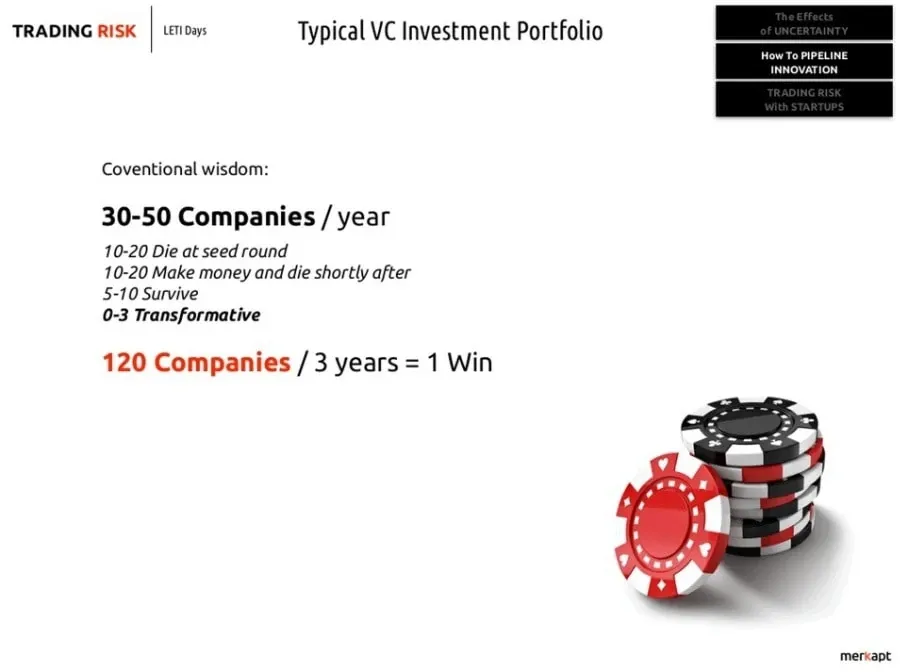
Building optionality doesn’t come naturally, and it’s never taught in your typical executive MBA.
Gaming the system with startups
Finally, this tool should help you connect the risk-averse culture of your industry to the mandatory risk-taking purpose of startups. Big pharma has more or less invented sub-contracting risk to a portfolio of partners. But, in 2015, startups were everywhere. Barriers to entry to any market have been crushed to the ground. It is probably already quite easy to duplicate this system in your own field:
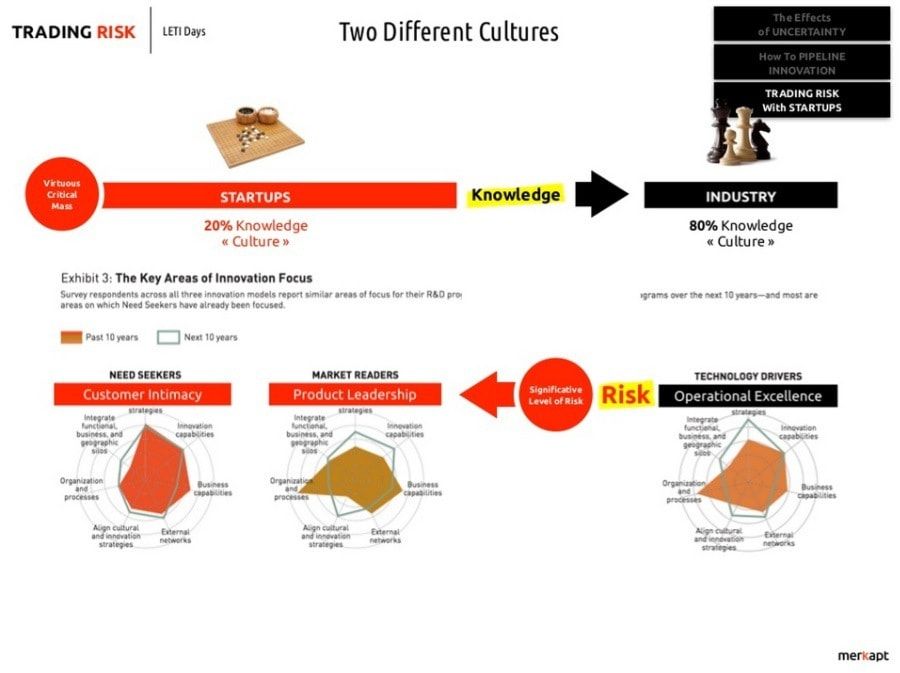
And, if you want to reboot your innovator’s DNA, ensure that some of these startups are run by your own intrapreneurs.



